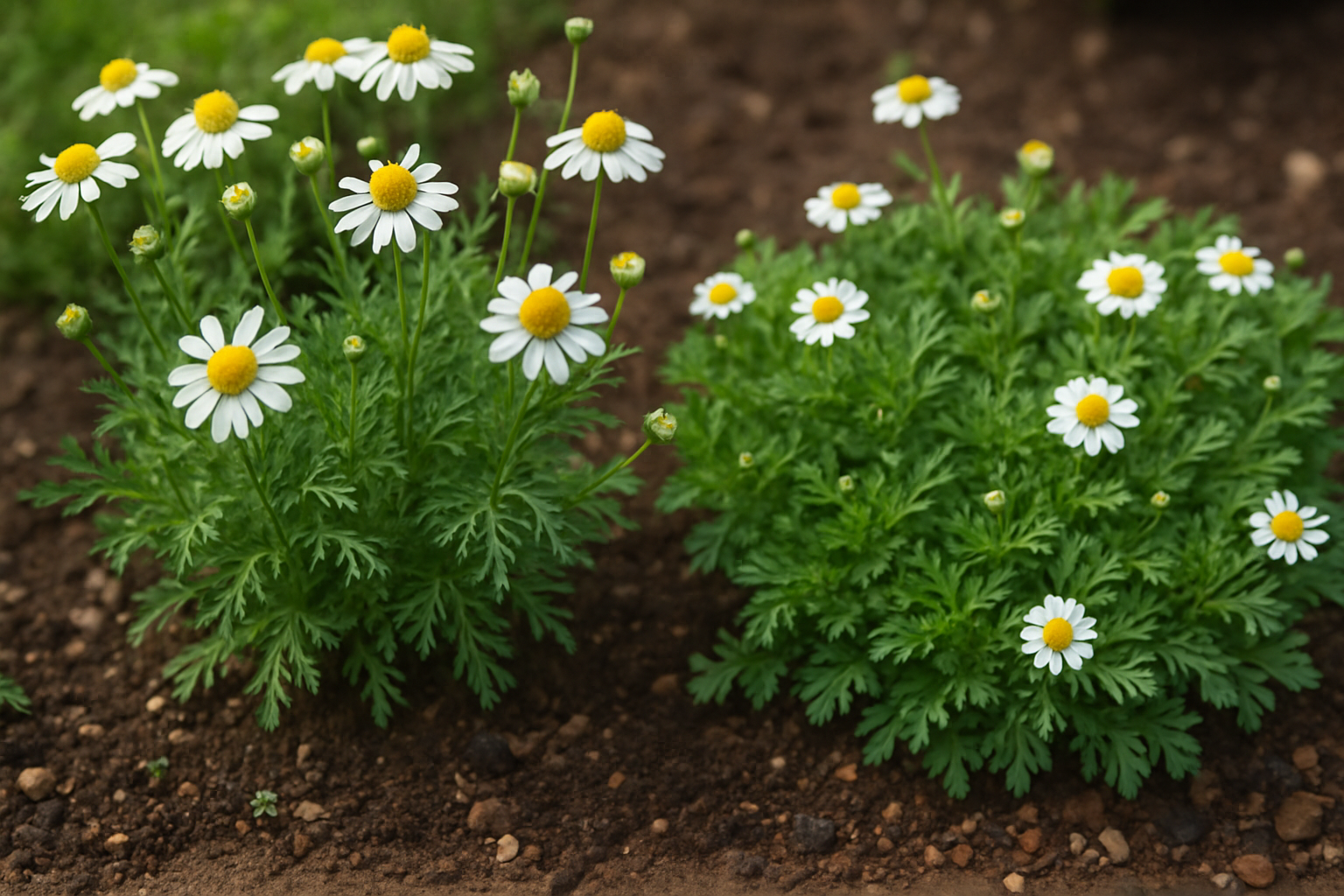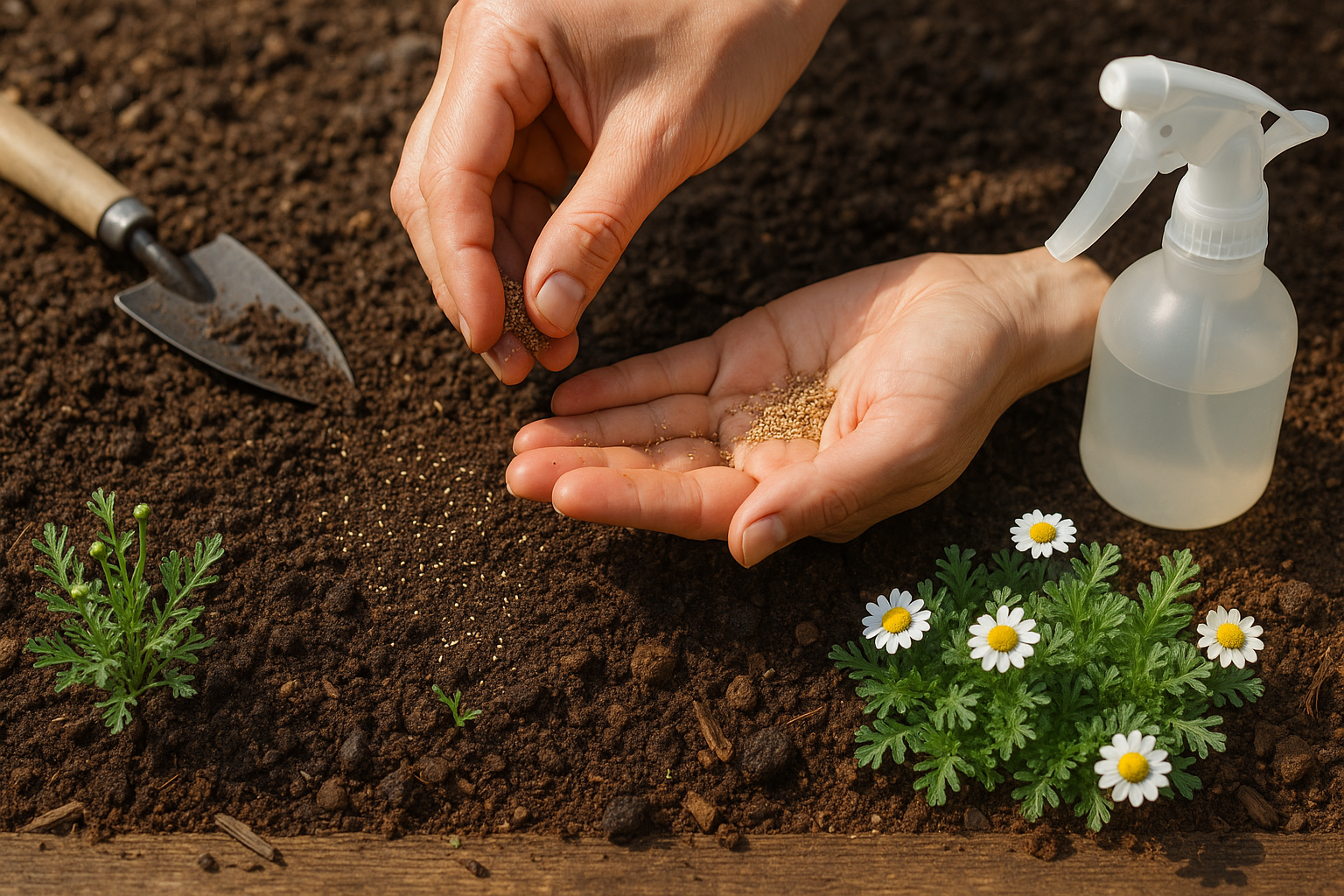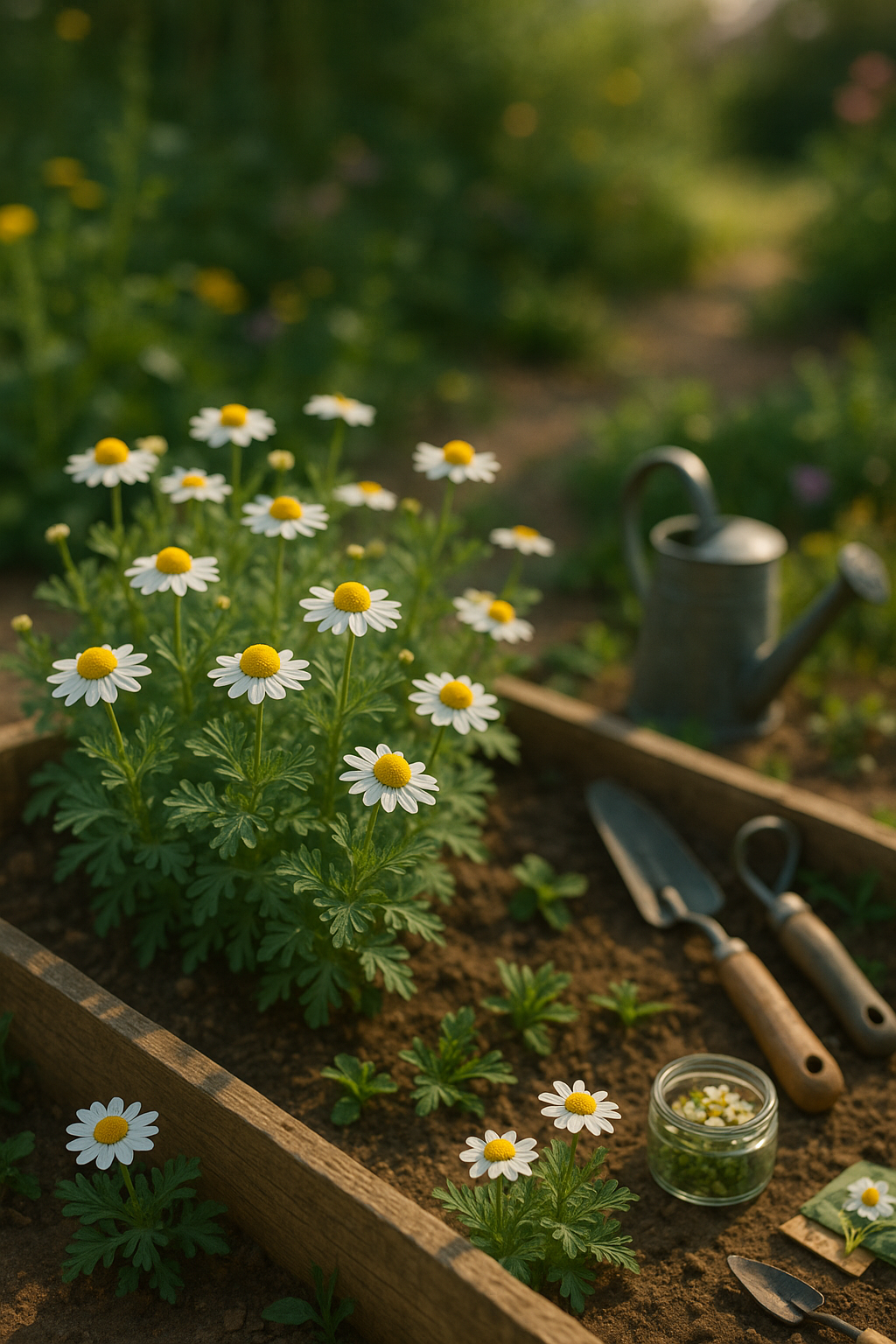Introduction to Chamomile Varieties

When it comes to creating a soothing garden or brewing a comforting cup of tea, choosing the best chamomile varieties can make all the difference. Chamomile is more than just a pretty, daisy-like flower; for centuries, people have relied on it for its calming herbal infusion, as a fragrant addition to herb beds, and even for its gentle medicinal properties—from easing upset stomachs to promoting restful sleep.
But did you know that not all chamomile is the same? Whether you’re seeking the sweetest flavor for your tea, the most delicate blooms for ornamental beauty, or the most potent plants for home remedies, selecting the right variety is key.
In this article, we’ll break down the main types of chamomile commonly grown at home—most notably German chamomile and Roman chamomile—explaining their unique features, growing habits, and the best uses for each. We’ll also share tips for growing chamomile successfully in different climates and soil conditions to help you get the most from your plants.
From the compact, ground-covering appeal of Roman chamomile to the prolific blossoms of German chamomile, you’ll learn which is best for your needs and how to care for them. If you’ve ever wondered which chamomile belongs in your windowsill pot, garden border, or home apothecary, read on for a complete guide to the best chamomile varieties to grow for any purpose.
German Chamomile (Matricaria chamomilla)
German chamomile (Matricaria chamomilla) stands out in gardens with its delicate, daisy-like flowers—white petals surrounding a prominent yellow center—perched atop wiry, branching stems that can reach up to two feet tall. The feathery, light green leaves give the plant a fine, almost airy texture, while its growth habit is upright and spreading, making it easy to tuck into borders or herb beds.
German chamomile is especially prized for tea production because its blooms are abundant, highly aromatic, and packed with soothing, flavorful oils. Compared to the similar Roman chamomile, German chamomile produces larger harvests of flowers, making it the commercial favorite for tea bags and bulk dried herbs.
Growing Conditions
Optimal growing conditions include full sun and well-draining, moderately fertile soil—a raised bed or garden patch with good air circulation is ideal. The plant thrives in temperate climates but tolerates some heat and light drought once established.
Plant Characteristics
Unique among garden herbs, German chamomile is an enthusiastic self-seeder: if you let some flowers go to seed, they’ll scatter for next year, often popping up in unexpected spots. Bloom time is typically from late spring through summer, sometimes continuing into early fall if deadheaded regularly.
Harvesting and Maintenance
If you’re growing for tea, harvest the flower heads when they’re fully open for the best flavor and potency. One thing to watch out for is overwatering, which can cause root rot, and dense, wet conditions may encourage powdery mildew or fungal problems. Additionally, because it self-seeds so freely, German chamomile can occasionally become weedy—pulling unwanted seedlings early will keep it in check.
Overall, it’s a low-maintenance, rewarding herb that offers repeated blooms and plentiful harvests with just a little attention.
Roman Chamomile (Chamaemelum nobile)
Roman chamomile (Chamaemelum nobile) stands apart from its cousin, German chamomile, in several important ways. Unlike German chamomile, which is an annual and needs replanting each year, Roman chamomile is a perennial herb that comes back reliably season after season. This makes it an excellent low-maintenance choice for gardeners seeking a resilient ground cover.
Traditionally, Roman chamomile has been used in herbal medicine for its calming properties, while German chamomile is more often found in commercial teas and skincare products. Roman chamomile features delicate, daisy-like flowers with white petals and golden centers, carried on low, feathery foliage that creates a lush, carpet-like effect. Its scent is notably sweet and apple-like—fresh and soothing—making it a favorite for sensory gardens and areas near paths or patios, where its aroma can be appreciated as you brush past.
Growing Conditions and Care
Roman chamomile thrives in cooler, temperate climates with full sun to partial shade. It prefers well-drained soil but tolerates some drought once established. It’s ideal for lawn replacement, edging, or planting between stepping stones since it’s soft to walk on and forms a dense, attractive mat that helps suppress weeds.
For best results, mow or trim lightly after flowering to keep it tidy and promote more growth. While not as tolerant of heavy foot traffic as grass, Roman chamomile can handle occasional use and recovers quickly. Regular watering is important during dry spells, especially in its first year, but established plants need little extra care.
Uses and Benefits
Whether you’re aiming for a fragrant lawn substitute, a whimsical border, or a pollinator-friendly ground cover, Roman chamomile is a beautiful, beneficial choice that brings both charm and practicality to your landscape.
Other Noteworthy Chamomile Varieties
Beyond the popular German and Roman chamomile, several lesser-known varieties offer exciting possibilities for gardeners and herbal enthusiasts.
Dyer’s Chamomile (Anthemis tinctoria), also known as golden marguerite, stands out for its vibrant yellow petals, which have a long history of use as a natural dye for textiles and crafts. This hardy perennial thrives in well-drained soil and sunny borders, making it a cheerful addition to pollinator gardens or as a cut flower in bouquets.
For those seeking something unusual, Pineapple Weed (Matricaria discoidea) brings unexpected charm to wild or informal spaces. Its small, dome-shaped green flowers emit a sweet, pineapple-like fragrance when crushed, and it’s remarkably resilient—tolerating compacted soils, foot traffic, and even roadside conditions. This makes it perfect for pathways, wildlife-friendly gardens, or urban green spaces where other chamomiles may struggle.
Another standout is ‘Zloty Lan’, a Polish variety prized for its dense, golden blooms and high essential oil content, making it especially desirable for tea production and herbal remedies. Unlike wild types, ‘Zloty Lan’ produces uniform, easily harvested flowers—ideal for those growing chamomile for home remedies or small-scale production.
Exploring hybrids and specialty cultivars can further expand your garden palette—look for varieties bred for larger blooms, unusual colors, or enhanced aroma, and match them to your local climate and needs.
Whether you’re drawn to the artistry of natural dyes, the novelty of wild-scented flowers, or the productivity of unique cultivars, integrating these noteworthy chamomile varieties can enrich both your garden’s look and its practical benefits. Try mixing a few types in one bed for season-long color, fragrance, and harvesting opportunities, or dedicate a small plot to experimenting with their different uses.
How to Choose the Right Chamomile for Your Garden
Choosing the right chamomile for your garden begins with understanding the two main types: German chamomile (Matricaria chamomilla) and Roman chamomile (Chamaemelum nobile).
German chamomile is an annual, ideal for gardeners who want plenty of flowers for tea each season and don’t mind reseeding every year—or letting the plants self-seed. It grows taller, around 2 feet, and fills in garden beds quickly but typically lasts only one season.
Roman chamomile, on the other hand, is a perennial that returns every year with its low-growing, mat-like habit. This makes it perfect as ground cover, for low borders, or even as a fragrant lawn substitute.
Climate also plays a role: German chamomile thrives in full sun and tolerates a wide range of soils, making it great for most home gardens. Roman chamomile prefers cool summers and can be a bit pickier about drainage and humidity, suiting temperate climates best.
Think about your intended use:
- If you love herbal tea, both varieties work, but German chamomile is often preferred for its richer flavor.
- If you want an ornamental look, Roman’s dainty foliage can be more striking.
Space is another important factor:
- Roman chamomile’s creeping growth suits small spaces and paths.
- German chamomile needs a spot where it can grow upward.
Beginners should check seed packets or nursery tags for terms like “organic,” which means seeds haven’t been treated with synthetic chemicals—ideal for edible use and pollinator-friendly gardens. Both types are widely available from organic seed retailers online and in local shops, making it easy to find quality starters for your garden.
Finally, always read up on care requirements and match your choice to your garden conditions and personal goals. Starting small with a test patch can help you see which chamomile thrives in your space before committing to larger plantings.
Planting & Care Essentials for Chamomile

Growing chamomile, whether it’s German (Matricaria chamomilla) or Roman (Chamaemelum nobile), is fairly straightforward with a few simple steps. Start by sowing seeds directly outdoors after the last frost; sprinkle them over loosened soil and press them gently—chamomile seeds need light to germinate, so don’t cover them heavily.
Choose a sunny location, as chamomile loves at least 4–6 hours of sunlight daily but can tolerate partial shade in hotter climates. Well-draining soil is key, with a preference for sandy or loamy types; heavy clay may lead to root rot, so amend as needed.
Water new seedlings lightly to keep the soil just moist, but avoid overwatering once plants are established, as chamomile handles drought better than soggy roots.
Preventing Pests and Promoting Health
To prevent pests like aphids or mildew, encourage airflow by spacing plants about 8–12 inches apart and remove debris that can harbor insects. A gentle spray of soapy water works well if you spot pests.
Maintaining Bloom and Harvesting
Deadhead spent blooms to extend the flowering season and ensure lush, continuous growth.
When harvesting for tea, pick flower heads in the morning after dew dries but before midday heat—snip them at peak bloom for the best flavor and scent. Lay out harvested flowers in a single layer on a screen to dry in a dark, ventilated space, then store them in an airtight container for use in soothing teas or craft projects like sachets and potpourri.
With these techniques, even beginners can enjoy a bountiful crop of sweetly fragrant chamomile.
Harvesting and Uses
Harvesting chamomile at the right time is key to getting the best flavor and potency from your plants. The ideal moment to harvest is in the morning, after the dew has dried but before the afternoon heat sets in. This is when the delicate daisy-like flowers are most aromatic and full of essential oils.
Simply pinch or snip off the fully open flower heads; if you let them go to seed, the quality diminishes. For an efficient harvest, you can lay a tarp beneath the plants and gently shake them or use a small rake designed for gathering petals.
Once picked, spread the flowers out in a single layer on a screen or dry paper towel in a well-ventilated, shaded area—avoid direct sunlight, which can degrade their beneficial compounds. Turn them gently every day until the flowers are crisp and dry, usually within a week.
Store your dried chamomile in an airtight container, like a glass jar, and keep it somewhere cool, dark, and dry to maintain freshness and potency for up to a year.
Uses for Dried Chamomile
- Brew calming teas for relaxation and sleep support—a staple in herbal home remedies.
- Make homemade skin-soothing salves.
- Create bath sachets for a gentle, fragrant soak.
- Use as a decorative accent in potpourri or press into art projects.
With careful harvesting and proper storage, homegrown chamomile is a versatile and rewarding addition to your wellness routine.
Conclusion & Final Tips
Growing chamomile at home provides a steady supply of soothing tea, natural remedies, and beautiful blooms for your garden. It also attracts pollinators and enhances the charm of your outdoor space. Experimenting with different varieties—like German and Roman chamomile—helps you discover which grows best in your climate and offers a variety of flavors and flower shapes.
For the best results, start seeds indoors early, plant in well-draining soil, and give your chamomile plenty of sunlight to encourage strong growth. Keep the area free of weeds and harvest blooms regularly to promote more flowers. If your plants start to get leggy, lightly trim them back to maintain bushiness.
Above all, don’t hesitate to try new varieties and techniques—every garden is unique, and you’ll learn as you go. Have you grown chamomile before, or do you have a favorite variety? Share your experiences in the comments—I’d love to hear what’s worked for you!
